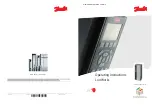
Videonics PowerScript
Creating Efficient Graphic Files for Use with PowerScript
139
Most image processing applications (such as Adobe Photoshop) give you the ability to
resample
an image to a different size and resolution. For best results, resample bit-mapped
EPS images to 72 dpi and keep them a reasonable size.
For example, starting with the image file mentioned above (300 dpi at 4x5 inches), you
want to create an image that occupies a corner of the screen. You want it to appear 25
scan lines high. You should resize the image to 25hx31w pixels at 72 dpi. This reduces
the image from almost 2 million pixels to 56,000—a file size that PowerScript can process
efficiently.
Another factor to consider with bit-mapped EPS images is the
square pixel
effect. See “The
Square Pixel Factor” later in this section for further information.
Working with
Vector-Based EPS
When you work with vector-based EPS files, file size is not as important a consideration
as with bit-mapped images. The determining factor with vector-based images is the num-
ber and types of objects it contains. The greater the number of objects and the greater
their complexity, the longer it takes PowerScript to process the image.
Image elements that significantly increase the time required to process vector-based
images include clipping paths, gradients, compound paths, numerous small objects,
paths with unnecessary points, and placed bit-map images.
The number of points on a path is a significant factor. Auto-traced images often contain
many more points than might be necessary to successfully render the image. Further-
more, many clip art files contain paths with extemporaneous points due to the way they
are created.
Overlapping Objects
When creating vector-based EPS images, overlap objects slightly rather than butting their
edges against one another. Because PowerScript anti-aliases objects during processing,
this provides good results. Anti-aliasing blends information from neighboring pixels into
the object edges to produce soft transitions between them. This can result in a back-
ground video image
bleeding
through the graphic where two objects butt against one
another. Overlapping objects by one or two pixels normally prevents unwanted back-
grounds from showing through.
More About
Anti-Aliasing
PowerScript automatically anti-aliases objects (including text) that it generates, but it
does not anti-alias imported, pixel-based graphics. You can anti-alias bit-mapped files
before importing them using various applications—such as Adobe Photoshop and other
utility programs. Some of these tools reduce the image size while anti-aliasing, so you
might want to create the image larger than its final size, then anti-alias and reduce the
size before importing the file into PowerScript.
Converting Vectors to
Bit-Maps
When you want to use a fairly complex vector-based graphic, you might want to convert
it to a bit-mapped image so that it displays more quickly. Converting from vector-based
to bit-mapped is known as
rasterizing
an image.
For example, suppose you have a complex vector-based graphic containing gradients,
clipping paths, and so forth, that you want to display in a smaller size. By rasterizing the
image, the smaller, bit-mapped version displays much more quickly.
Some computer applications, such as Adobe Photoshop, can rasterize images directly sim-
ply by opening them. Other utility programs can also accomplish the conversion. Yet
another alternative is to use a screen capture utility program. Display the vector-based
image on-screen, adjust it to the desired dimensions, then capture the image with the
utility program—which automatically converts it to a bit-mapped image.
Summary of Contents for PowerScript PS4000S
Page 22: ...Notes ...
Page 38: ...Notes ...
Page 72: ...Notes ...
Page 96: ...Notes ...
Page 122: ...Notes ...
Page 156: ...Notes ...
Page 174: ...Notes ...
Page 226: ...Notes ...
Page 236: ...Notes ...
















































